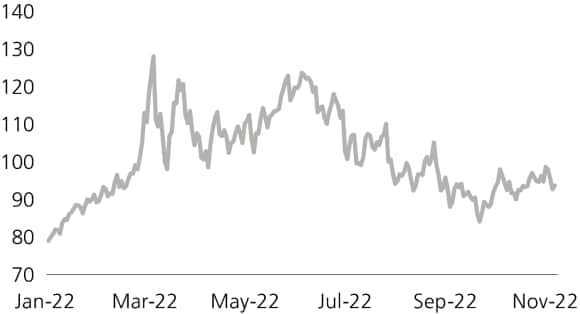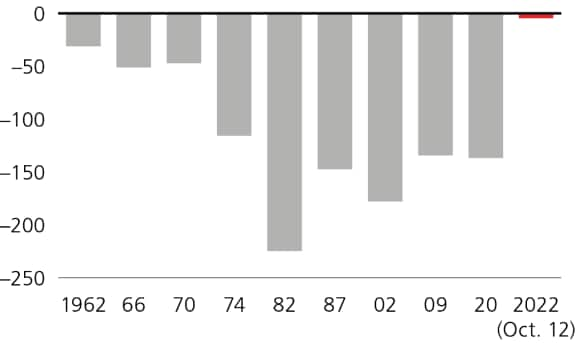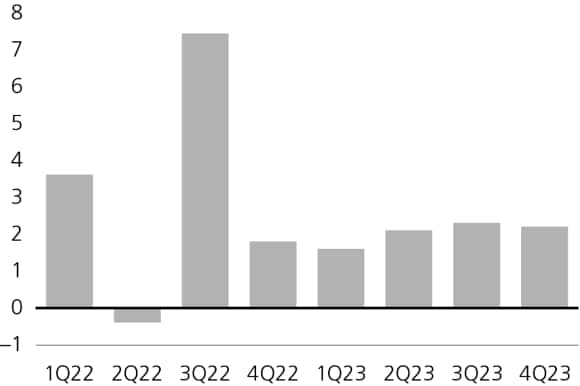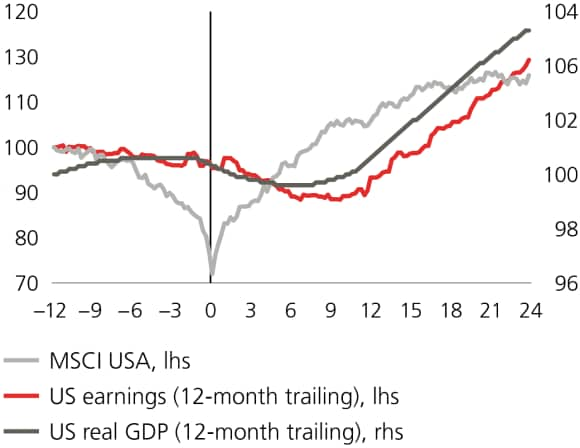A Year of Inflections
Year Ahead 2023

Welcome
Year Ahead 2023
Navigating inflection points will be key to investment success in the year ahead. It will be our challenge and privilege to help guide you through them. We thank you for your trust and look forward to helping you realize your financial goals.
Insights on this page
Insights on this page
Jump down to a section of this report to learn more.
Key investment ideas
Key investment ideas
Explore related investment ideas to prepare your portfolio.
A Year of Inflections
A Year of Inflections
In 2022, inflation stayed high, interest rates rose, growth expectations fell, and both equity and bond markets suffered. 2023 will be a year of inflections as investors try to identify turning points for inflation, interest rates, economic growth, and financial markets against a complex geopolitical backdrop.
What does it mean for investors?
History tells us that durable turning points for markets tend to arrive once investors begin to anticipate interest rate cuts and a trough in economic activity and corporate earnings. As we enter 2023, high inflation and rising interest rates alongside elevated earnings expectations and geopolitical risks inform our investment themes of defensives, value, income, and safety. But we think the backdrop for risky assets should become more positive as the year progresses. This means investors with the patience and discipline to stay invested should be rewarded with time. Investors currently sheltering from volatility will need to plan when, and how, to rotate back into riskier assets over the course of 2023.
Key investment ideas
Key investment ideas
2022 in review
2022 in review

Four things we got right
Look beyond mega-cap tech
The US dollar would strengthen and gold would fall
Energy equities and hedge funds would help shield portfolios
Crypto is an "entertainment" trade, not an investment

Four things we got wrong
We did not expect the Russia-Ukraine war
Inflation would fall
Monetary policy would tighten modestly
Bond yields would rise slightly










